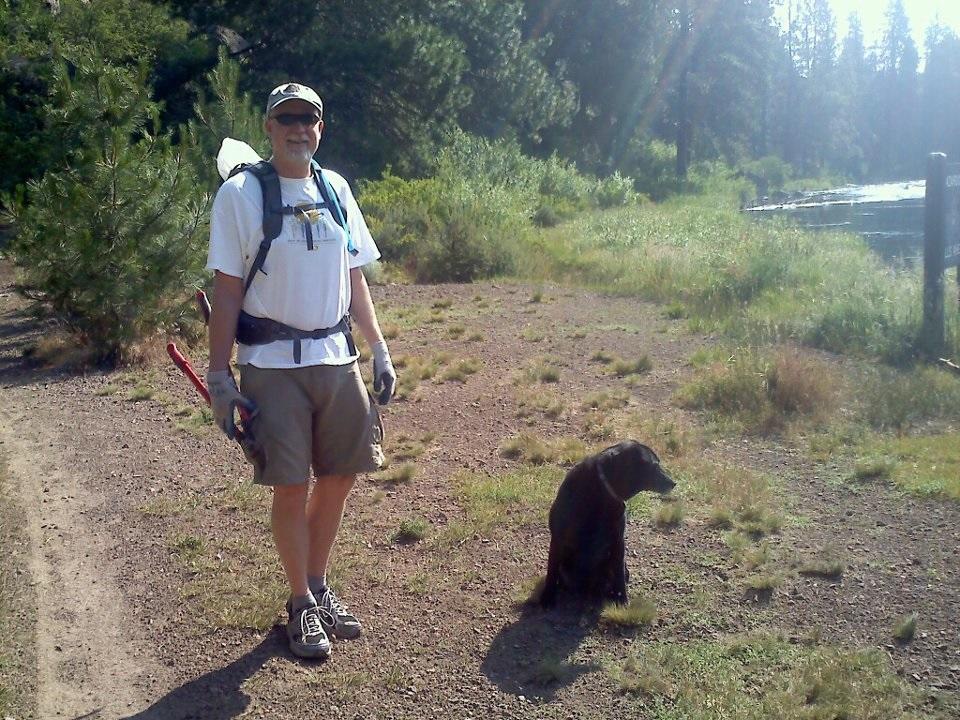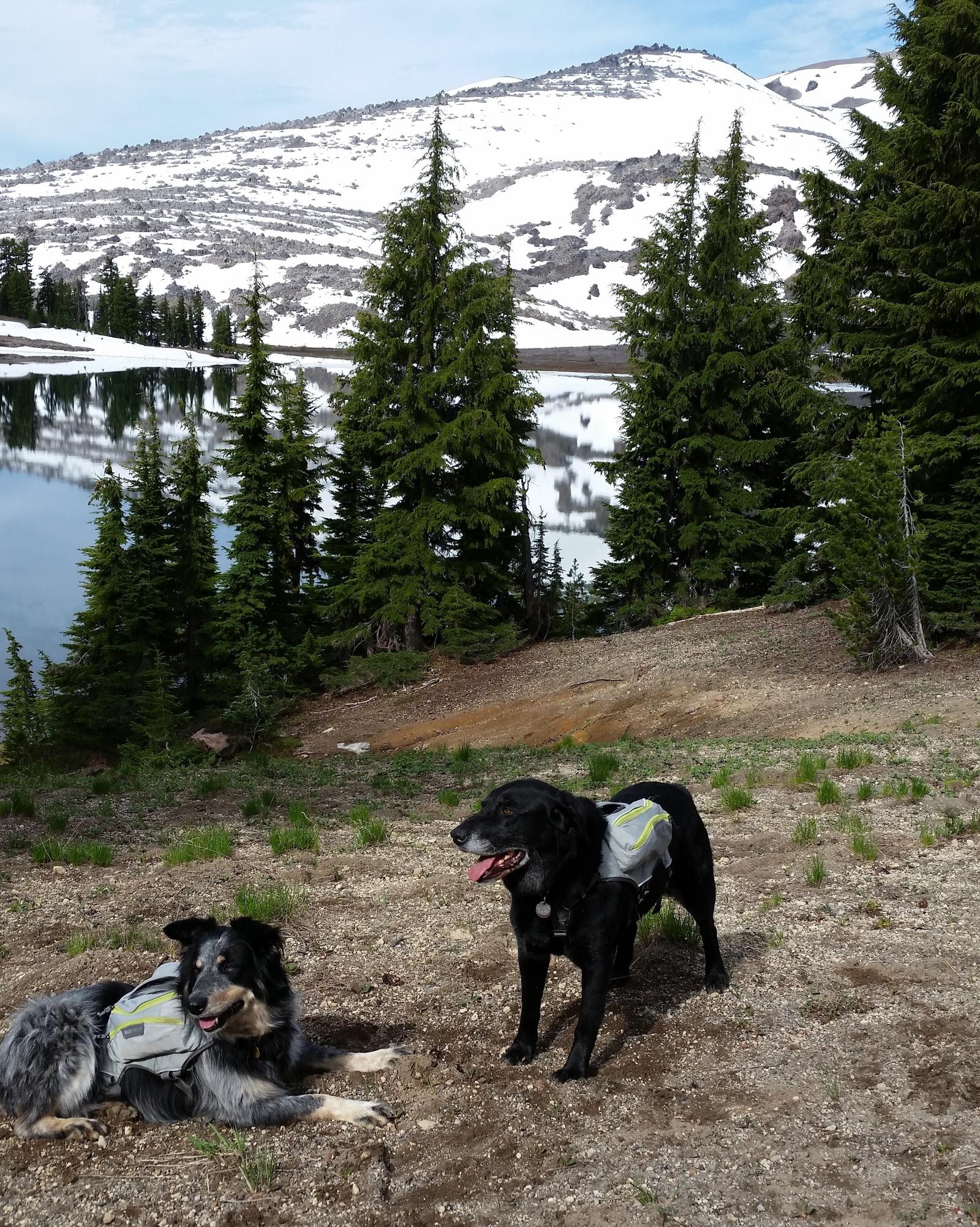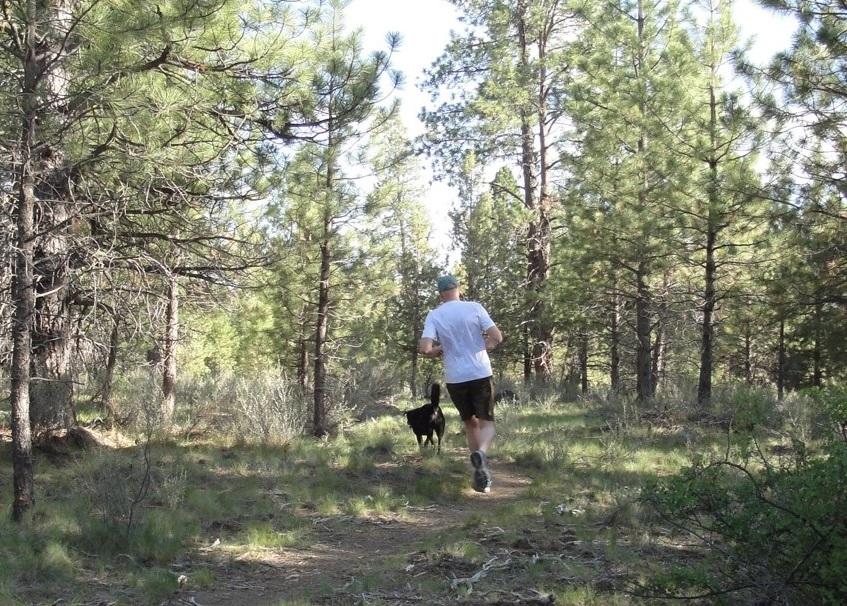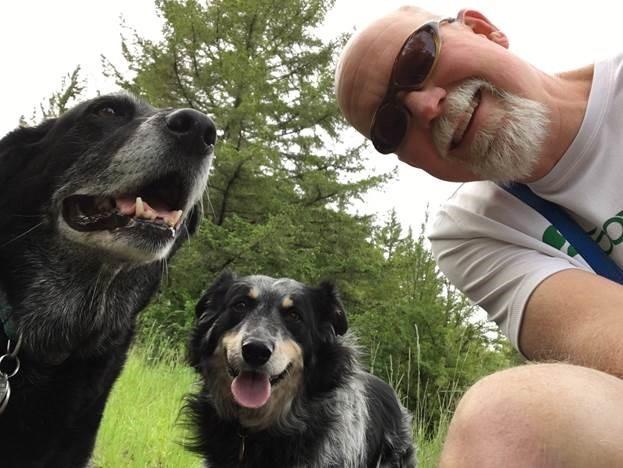
In a recent blog post, Ted Labbe argued in favor of Metro’s restrictions on dogs in natural areas. Here, I share a different perspective.
I believe most people agree on the importance of good trail etiquette and enforcement as a catalyst for etiquette. I also believe there are places where human recreation of all types should be restricted.
On the other hand, I believe it is vital to complement restrictions in some locations with the provision of an adequate number of high-quality off-leash trail opportunities in other locations.
Here’s why a more nuanced approach is needed:

Labbe suggests that use of off-leash areas in parks (sometimes known as dog parks) and use of on-leash trails are substitutes for off-leash trail recreation. This is a common response, but is it accurate? For many, it is not. Just as hiking and mountain biking or downhill and cross-country skiing are different recreation activities, so, too, are dog park, non-dog trail, on-leash trail, and off-leash trail recreation.
There may be places where mountain biking is not allowed, but do we rationalize that by telling mountain bikers there are plenty of places for them to engage in non-substitute activities such as walking their bike or hiking without a bike? Imagine the outcry if Mt. Hood National Forest said it would not allow alpine skiing, but it would provide plenty of options to engage in cross-country skiing as an alternative.
People risk expensive fines and social disapproval by engaging in off-leash trail recreation where it is not allowed due to the absence of legal options. We can condemn that behavior, or we can learn from it. If everyday people take these risks, does this mean they highly value that activity, that other activities are not substitutes, and therefore that provision of legal options is important?
In a broader context, the Oregon State University College of Forestry took this type of learning approach in its collaborative community review of recreation on its research forests. It observed a 25-mile, user-created system of unauthorized trails. Rather than simply condemning the trails, it concluded that they “indicate[d] the community has needs which are not met by the authorized trail and road system.” As with the 1920s prohibition of alcohol, I believe the solution for off-leash recreation is not criminalization but rather legalization with appropriate boundaries and conditions.
Aside from these ethical and managerial considerations, there is a public health consideration. Oregon State Parks and many others have stressed the importance of engaging in outdoor recreation to achieve public health benefits. Labbe notes that dogs make great outdoor companions, and researchers have gone as far as saying that “acquiring a dog should be explored as an intervention to get people more physically active.” By extension, pet ownership can reduce health care expenditure.

These benefits are achieved if dog-friendly opportunities stimulate human movement, and trails are ideal for that. One research team observed that “urban planning reports recommend public open space (POS) that supports dog owners should be linear in design (to keep owners walking) … include free-running areas for dogs … and [be] within a 30-min walk from home.”
Recent research in Oregon, whose implementation I led, provides a local perspective on these issues. Results indicate that people engaging in off-leash trail walking/running recreate for more time and at a higher intensity than people engaging on-leash (Figure 2.3 and 2.4), with both categories reflecting more days of participation per year than all other trail categories beyond walking/hiking in total (Figure 2.1).
With respect to priorities for additional trails inside one’s community, 49 percent of Portland region respondents indicate options for walking/running off-leash is a moderate or high priority, while 40 percent indicate this priority for on-leash options (Table 3.11a).
Of course, there also are ecological considerations, but one aspect we often forget is that these considerations inherently involve value judgments. The authors of the widely referenced book Wildland Recreation: Ecology and Management remind us that recreation "impacts become good or bad, important or insignificant, only when humans make value judgments about them."
Labbe references Lori Hennings' compilation of literature on dog disturbance of wildlife, and Hennings reminds us that “[a]ny human related activity can disturb wildlife” and that “[u]rban wildlife is subjected to many human-induced stressors,” including habitat loss and fragmentation from the array of roads and buildings associated with human settlement. In the context of natural area trails, humans, too, are predators that disturb wildlife, as Hennings illustrates in her conceptual Figure 1.

Labbe lists a range of canine impacts on wildlife, and “humans” could be substituted for “dogs” as a source for most of those impacts. The impact of humans is an argument for some areas having no recreation use at all, if those areas provide important ecological functions that would be jeopardized by recreation use.
For the remaining areas, the question becomes what activities are allowed, at what level, when and where. I believe this is where Metro’s policy falls short. Specifically, it is unclear what value judgment led to non-dog walking and other activities being allowed, but off-leash walking being so pervasively restricted. Referring to Hennings' Figure 1, what is the basis for judging the per-person disturbance level of “people on trail” acceptable but the level of “people on trail, dogs off-leash” unacceptable?
There are processes for coming to agreement on acceptable levels of impact, ideally based on fundamental goals of sustaining ecosystem structure and function. After acceptable levels have been agreed, decisions can be made about which activities are allowed, at what level, when, and where.
The allocation of opportunities logically would reflect not just ecological impact, but also value to recreationists and broader goals such as public health. Research on the topic appears to be lacking, but off-leash recreationists may, on average, value a given trail opportunity more than non-dog recreationists, in part because they have so few options. The first trail available to off-leash recreationists likely is valued more than the 101st trail available to non-dog recreationists.
Most human decisions involve trade-offs, and decisions about trail recreation are no different. In the face of such trade-offs, public land managers across Oregon have provided opportunities for diverse experiences, including both on-leash and off-leash trail recreation.
Consider the impacts of humans recreating with dogs, but please do so in a way that reflects the complexity and nuances of recreation experiences and recreation ecology, as well as best practices in recreation management. I believe that would lead to a policy of providing opportunities for citizens with dogs while sustaining natural areas.
I join Labbe in encouraging you to write your Metro councilors, but I encourage a different message. I do not believe dog-friendly recreation should be allowed everywhere, but I believe there are strong reasons to provide high-quality opportunities for off-leash trail recreationists in some areas. If you feel the same, please let your councilors know.
carlotta.collette@oregonmetro.gov
tom.hughes@oregonmetro.gov
shirley.craddick@oregonmetro.gov
sam.chase@oregonmetro.gov
bob.stacey@oregonmetro.gov
craig.dirksen@oregonmetro.gov
kathryn.harrington@oregonmetro.gov
